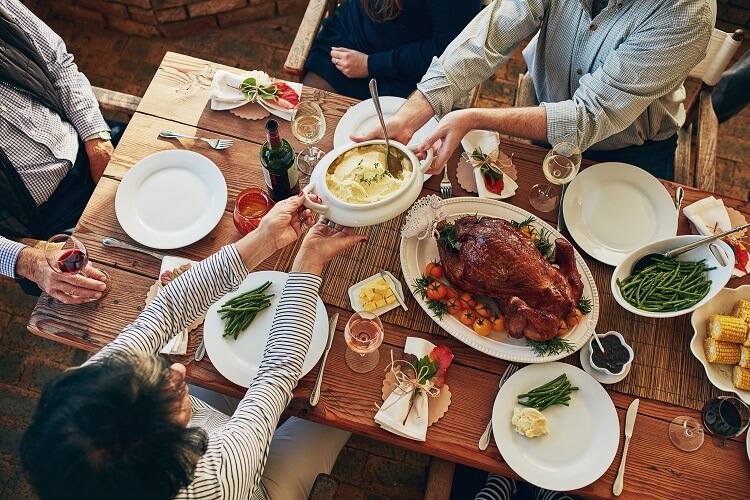Give Thanks, Stay Safe
Thanksgiving kicks off a season filled with delicious meals. Keep your holidays happy by keeping food hazards in check.
Thanksgiving kicks off a season filled with delicious meals. Keep your holidays happy by keeping food hazards in check.

This week, Americans will gather with friends and family to give thanks and feast on a traditional Thanksgiving meal – the first of many such repasts between now and the New Year.
We may fret about the effect the meals will have on our waistlines, but most of us are less concerned with, say, Clostridium perfringens. That name might not ring a bell, but you’re probably familiar with this spore-forming bacteria if you’ve ever had food poisoning. According to the Centers for Disease Control and Prevention (CDC) it’s one of the top five food borne illnesses, responsible for 1 million cases each year. Although not typically fatal, victims suffer unpleasant abdominal cramps and vomiting within six to 24 hours. Perhaps not coincidentally, the CDC reports that most outbreaks occur in November and December.
While this sounds intimidating, there are simple steps you can take to prevent foodborne illness from wreaking havoc on your holidays.
In professional foodservice, there are three objectives when dealing with bacteria: Keep it from spreading, stop it from growing and kill it. Though methods may vary from a commercial kitchen, home cooks can follow these objectives as well.
To prevent the spread of bacteria, the first step is protecting food by keeping it refrigerated and covered until you’re ready to prepare it. Clean and sanitize surfaces, knives and utensils – including your hands – after working with raw meats, poultry and seafood and before handling vegetables, grains and prepared foods. Cross-contamination is one of the most common ways foodborne illness is spread.
To stop bacterial growth, be aware of the Time-Temperature Danger Zone. Bacteria grows best between 41° and 135° F. Given enough time, food can warm or cool to the Danger Zone. When working with raw turkey, for example, never leave it at room temperature for more than two hours. If you have a frozen bird, it is best to defrost it under refrigeration or in a bath of cold water, which you’ll need to change every 30 minutes.
Cooking food to the proper temperature kills harmful bacteria, so wait until your bird or roast is done before snagging a bite. Times and temperatures will vary by cooking method and weight. However, poultry should be cooked to an internal temperature of 165° F at the thickest parts (thigh, breast and wing). If it’s stuffed, the stuffing should reach the same temperature and the bird should rest for 20 minutes before removing the stuffing.
For meats like pork and beef, and for more detail on poultry, check out the Foodsafety.gov Meat and Poultry Roasting Chart.
Food safety doesn’t end once you’re done cooking. Remember the Time-Temperature Danger Zone after the big meal. It’s important to get uneaten food down to 40° F or below within two hours. Large cuts of meat or big pots of soup may not cool down quickly enough even in the refrigerator or freezer, so divide into smaller portions. And don’t forget leftovers – for some, the best part of the holidays. Fortunately, there’s only one number to remember: reheat everything to 165° F for safety.
By the time the holidays are over, you may feel like you can’t eat another bite, but if you follow these basic safety practices, it won’t be due to foodborne illness.
With a century-long legacy, the National Safety Council is a global center for safety expertise. Let's work together to align resources. We look forward to learning about ways we can join efforts to expand safety everywhere!
There are no items in your cart